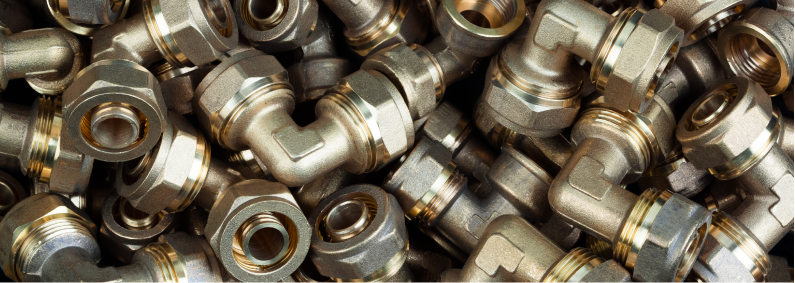Carbon Steel A106 GR.B, A106 GR.C, A53 GR.B, A333 GR.6

Carbon steel pipes are highly sought-after for their strength, durability, and resistance to wear, making them ideal for high-pressure applications across industries. These grades—A106 GR.B, A106 GR.C, A53 GR.B, and A333 GR.6—are manufactured to meet ASTM standards and are widely used in industries such as oil and gas, petrochemicals, power generation, and construction.
Key Features of Carbon Steel Pipe Grades
- ASTM A106 GR.B and GR.C: Widely used for high-temperature and high-pressure applications, A106 seamless pipes are suitable for refineries, power plants, and petrochemical applications. Grade B and Grade C differ primarily in their mechanical properties, with Grade C offering slightly higher strength.
- ASTM A53 GR.B: Known for its versatility, A53 GR.B is suitable for both welded and seamless pipes. It is commonly used in low- to medium-pressure applications and can be used for plumbing, mechanical, and structural applications.
- ASTM A333 GR.6: Designed for low-temperature services, A333 GR.6 offers excellent impact resistance and durability at sub-zero temperatures, making it suitable for cryogenic applications, such as pipelines in Arctic environments or LNG plants.
Key Benefits of Carbon Steel Pipes
- High Strength and Durability: Carbon steel pipes are built to withstand high pressures and temperatures, making them ideal for demanding environments.
- Cost-Effective Solution: Carbon steel is often more economical than other materials, providing strength and durability at a reasonable cost.
- Corrosion Resistance: While carbon steel can be susceptible to corrosion in certain environments, coatings and linings can be applied to increase longevity.
- Versatility Across Applications: Carbon steel pipes are used in a wide range of industries due to their versatility and customizable specifications.
- Temperature Resistance: With grades like A333 GR.6, carbon steel can handle extremely low temperatures, making it a versatile material for temperature-sensitive applications.
Applications of Carbon Steel Grades
- Oil and Gas Industry: Ideal for high-pressure pipelines, heat exchangers, and processing equipment where strength and durability are crucial.
- Power Generation: Used in high-temperature environments like power plants, where steam and hot gases are generated and distributed.
- Petrochemical Plants: Suitable for piping systems that transport corrosive fluids and gases under varying pressure and temperature conditions.
- Construction and Structural Use: Carbon steel pipes are commonly used for structural applications in buildings and infrastructure projects.
- Cryogenic Applications (for A333 GR.6): Essential in LNG plants, low-temperature pipelines, and applications where durability at sub-zero temperatures is required.
Carbon Steel Grades Overview
ASTM A106 GR.B and GR.C
- Application: High-temperature and high-pressure environments
- Tensile Strength: 415 MPa (GR.B), 485 MPa (GR.C)
- Yield Strength: 240 MPa (GR.B), 275 MPa (GR.C)
- Temperature Resistance: Suitable for high temperatures, commonly used in power plants, refineries, and petrochemical applications.
ASTM A53 GR.B
- Application: Low- to medium-pressure applications
- Tensile Strength: 415 MPa
- Yield Strength: 240 MPa
- Temperature Resistance: Suitable for structural, plumbing, and mechanical applications with moderate temperature and pressure requirements.
ASTM A333 GR.6
- Application: Low-temperature environments
- Tensile Strength: 415 MPa
- Yield Strength: 240 MPa
- Temperature Resistance: Performs well in sub-zero temperatures, ideal for cryogenic applications.
Manufacturing Standards for Carbon Steel Pipes
Carbon steel pipes meet various global standards to ensure quality and reliability:
- ASTM A106: Specification for seamless carbon steel pipe for high-temperature service.
- ASTM A53: Covers seamless and welded steel pipes for low- and medium-pressure applications.
- ASTM A333: Covers seamless and welded steel pipes for low-temperature service, especially for -45°C applications.
- ASME B36.10M: Dimensional standards for welded and seamless wrought steel pipes.
Available Forms and Customization Options
- Sizes and Lengths: Carbon steel pipes are available in a wide range of diameters and customizable lengths to suit specific project needs.
- Ends: Can be provided with plain, beveled, or threaded ends for ease of installation.
- Surface Finishes: Pipes can be supplied with protective coatings or linings to prevent corrosion and enhance durability.
- Heat Treatment: Options like normalization, annealing, and tempering are available to achieve desired mechanical properties.
Quality Assurance
Carbon steel pipes undergo rigorous quality checks to ensure they meet the highest standards for durability and performance:
- Mechanical Testing: Tests for tensile and yield strength, elongation, and hardness.
- Impact Testing: Required for grades like A333 GR.6 to verify low-temperature performance.
- Hydrostatic Testing: Ensures the pipe can withstand pressure without leaking.
- Dimensional Accuracy: Precision cutting and machining to meet specified tolerances.
FAQs
While both are seamless carbon steel pipes, GR.C has a slightly higher carbon content, providing increased tensile strength and durability. This makes GR.C better suited for applications with high pressure and temperature requirements.
ASTM A53 GR.B is typically used for moderate temperature applications. For higher temperatures, ASTM A106 GR.B or GR.C would be more suitable.
ASTM A333 GR.6 is engineered to perform well at sub-zero temperatures, providing excellent impact resistance and preventing brittleness, which makes it ideal for cryogenic and low-temperature applications.

Products
Industry We Serve
- Oil & Gas industries
- Chemical process industries
- Pump and valve in high pressure component
- Food industries
- Pulp and paper industry
- Aerospace industry
- Power plant
- Mechanical component
- Sugar industry
- Cement industry
